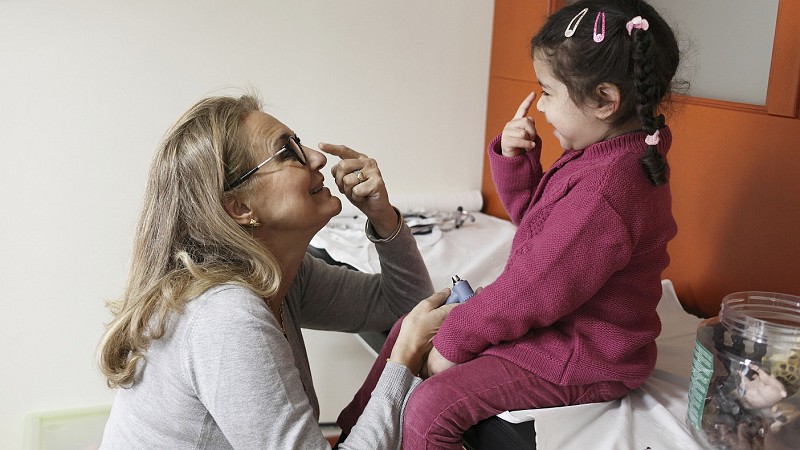The protocol of preventive activities and health promotion in pediatric age includes a series of periodic clinical checks in order to improve the overall health of our children.
At the neurological level, screening to assess the different areas of psychomotor skills is done through the program called "East-Haizea" and has been established for many years in the periodic reviews of children. In contrast, assessment of communication / relationship areas has been a weak point in follow-up controls, conditioning an often late diagnosis of Autism Spectrum Disorder (ASD) beyond three years.
We currently have an ASD screening questionnaire, called M-CHAT, which is implemented in the 18-month health review. It consists of 23 questions, is very quick to answer (5 minutes) and has a sensitivity of 85% to detect risk of ASD. In the event that the score obtained is higher than 8, it is necessary to refer the child to the early stimulation center, in this case the CDIAP, and to the neuropediatrician to complete the assessment and start treatment as soon as possible.
In recent years we are seeing an increase in cases of ASD with a prevalence of one case in every 50 children. It must be said that it includes a wide range in relation to the degree of affectation and clinical and functional repercussion.
The common fact that all ASDs share is the difficulty in the areas of communication / relationship. Often parents initially show concern for speech delay and do not value other difficulties or justify them by saying, for example, “he is a very independent child and doesn’t need anyone” or “he is so entertained in what he does that he is not gira ”.
There are indicators that should alert us to the possibility of an ASD, such as the fact that the child does not point the finger when he wants something or does not discriminate against strangers around the age of one year. Children should discriminate against relatives of strangers, turn around when called, share care, and demand care from caregivers.
It is very important the early diagnosis made by a multidisciplinary team with expertise in ASD in order to initiate as soon as possible a careful assessment and appropriate stimulation work in each case.
As for the etiology of ASD, different etiological mechanisms are gradually becoming known. Currently the evidence indicates that there is no autism but that ASDs are different disorders, of multiple etiologies, which have similar manifestations. We know that the genetic cause is the most important and that there are different genetic mechanisms in ASD. If a family has a child with ASD, one in five subsequent children would have it as well and one in three in the event that the diagnosis was made by two previous children.
The neurological study protocol includes the practice of a brain MRI to assess the anatomy of the nervous system, the practice of an electroencephalogram in the event that seizures are suspected (present in 15-30% of children with ASD), and genetic studies that include the assessment of so-called fragile X-syndrome, Rett syndrome in girls and the so-called array-CGH study in which more than 100 genes can be studied which are related to autism. It is also very important to rule out a hearing problem as a possible cause of language delay.
There are currently no effective drugs to treat the nuclear symptoms of ASD. There are two drugs approved to treat irritability, impulsivity and hyperactivity which are risperidone and aripiprazole.
In relation to stimulation treatment, it must meet the following basic objectives:
- Start it as soon as possible, even if the diagnosis is not definitive.
- At all ages, the intervention must be shared and coordinated between the parents, the school and the responsible therapist of the child. Parents and professionals need to know the specific difficulties of each child with ASD in order to be able to apply the appropriate strategies in each case.
- The work should be applied whenever possible in the child's natural environments.
- The most effective intervention is intensive and should include time at school and with the family; it must be designed specifically for each particular child.
In relation to the evolution, around 20% of children diagnosed with ASD, over time stop meeting the diagnostic criteria on which the diagnosis was based and achieve a sufficiently satisfactory social and work adjustment, especially those who they have a good cognitive ability and a good level of language. Despite this, they often have peculiarities of behavior and adaptation difficulties with the risk of being bullied during adolescence. The remaining 80% have varying degrees of involvement.


